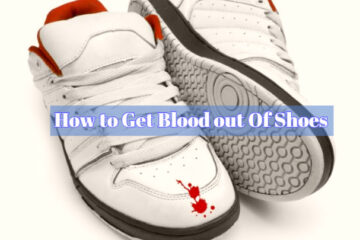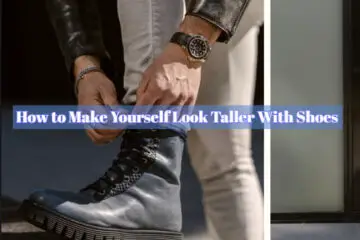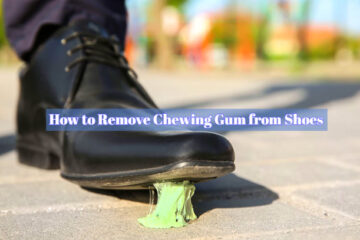If you spend hours on your feet for work, uncomfortable shoes can make the day feel endless. Even quality footwear can cause pain, blisters, calluses or other issues if worn all day, every day.
While specialized shoes like nurses’ or chefs’ clogs aim for comfort, they aren’t a cure-all. And regular dress shoes rarely prioritize cushioning over style.
Luckily, you have options for making work shoes more comfortable and saving your feet. Certain fit adjustments, accessories and techniques can dramatically improve any pair.
In this guide, we’ll cover 14 tips for relieving foot pain and making your existing work shoes easier to wear
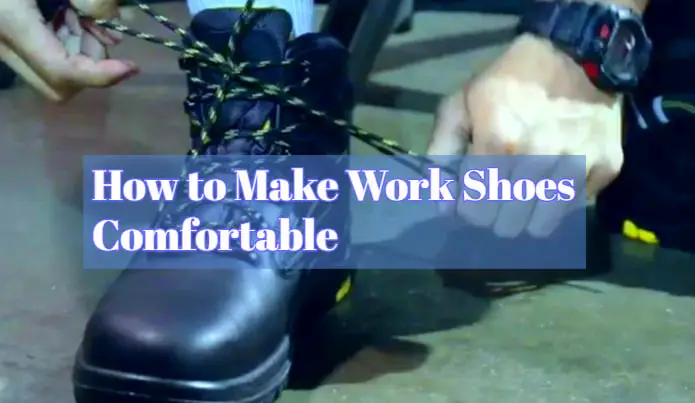
Why Are Work Shoes Uncomfortable?
Before jumping into solutions, it helps to understand the common culprits behind uncomfortable work shoes:
1. Rigid Materials
Leather, plastic and heavy rubber soles don’t flex. Unyielding uppers and bottoms irritate feet during each step. The stiffer the shoe, the more likely it’s painful.
2. Narrow Toe Boxes
Many work shoes taper sharply at the toes. This forces feet into an unnatural triangular shape. Over time, constriction leads to blisters, bunions and blackened nails.
3. Too Tight Fit
Laces cinched too tightly pressurize the foot. As feet swell during the day, the vice-like grip cuts off circulation. Optimal comfort comes from light compression, not a vise grip.
4. Insufficient Cushioning
Without ample cushioning underfoot, hard midsoles and outsoles pound feet. Prolonged force applied to delicate metatarsals feels like a jackhammer. Thin, low quality insoles offer little relief.
5. Inflexible Soles
Work shoes often feature thick, rigid soles. The lack of flex from heel to toe buffets feet with each step. It also prevents natural foot bending required for comfortable walking.
6. Excess Weight
Heavy boots and shoes burden feet. Lugging around extra weight strains muscles and joints. This accelerates fatigue, especially on hard surfaces.
7. Improper Sizing
Many people wear the wrong size shoes. Too short causes jammed toes and nails. Too long leads to friction and heel slippage. Either extreme contributes to serious foot pain and health issues.
14 Tips to Make Work Shoes Comfortable
Now that you know why work shoes hurt happy feet, here are 14 fixes to transform torturous footwear into high-heel heaven:
1. Wear the Right Size Shoes
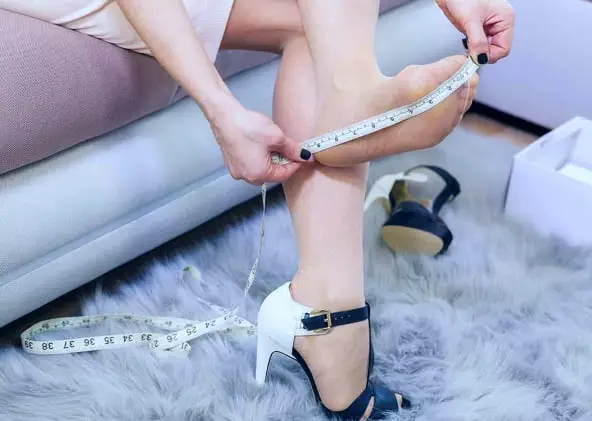
Like Goldilocks, the goal is finding footwear that’s not too big or small – but just right. Everyone’s feet swell and shrink a bit during the day.
- Measure feet at the end of day when larger
- Try on shoes with the socks you’ll wear at work
- Ensure a half-inch gap between longest toe and shoe tip
- Feet shouldn’t slip or feel pinched when laced
- Stand during sizing to mimic how you’ll wear shoes
- Consider buying two sizes if swelling fluctuates
Proper length and width reduces slippage, constriction and resultant discomfort. Don’t assume you’re still the same size from school. Feet changes over time.
2. Choose Breathable Materials
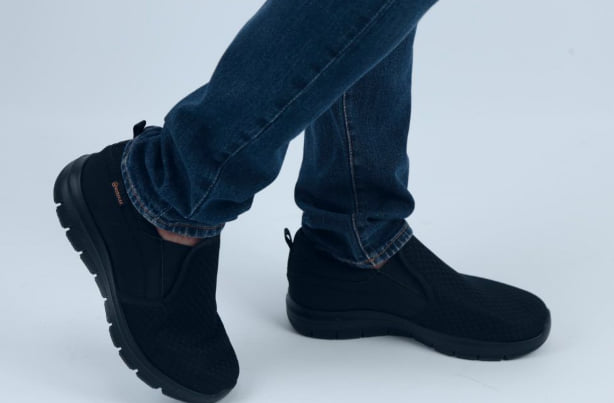
Breathability prevents sweaty feet which cause blisters, fungal infections and general discomfort. Consider these breathable options:
- Leather Or Mesh Uppers: Leather and mesh uppers allow airflow to your feet.
- Removable Insoles: Letting your shoes air out overnight helps reduce moisture.
- Open-Back Clogs: Backless styles common in nursing shoes promote air circulation.
For warm environments, leather is cooler than synthetic uppers that trap heat. And prioritize mesh panels when possible.
3. Use Toe Inserts
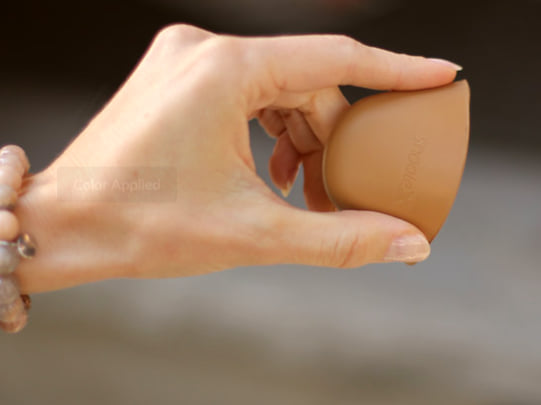
Toe inserts or sleeves protect skin from irritation. Gel pads cushion toes prone to pressure spots and blisters from repetitive rubbing.
You can buy:
- Gel toe sleeves: Provide all-over cushioning.
- Toe caps: Shield a single toe being pinched.
- Tube gel pads: Cushion the sides of toes.
Look for low-profile inserts that fit in work shoes. Replace them regularly as the gel breaks down over time.
4. Break-In New Shoes Slowly
Stiff new shoes wreak havoc on tender trotters. Don’t wear them all day right away. Break them in gradually:
- Try on with socks at home to ensure good fit
- Walk around house in them to begin flexing
- Add moisture to leather parts to soften and stretch quicker
- Wear 1-2 hours the first work day, check for hot spots
- Double the wear time each subsequent day
- Build up to all day over the course of a week
Ramping up slowly molds shoe to your foot while building callouses for friction protection. Don’t rush the process or you’ll risk serious blisters.
5. Soften Tough Shoes With a Hairdryer
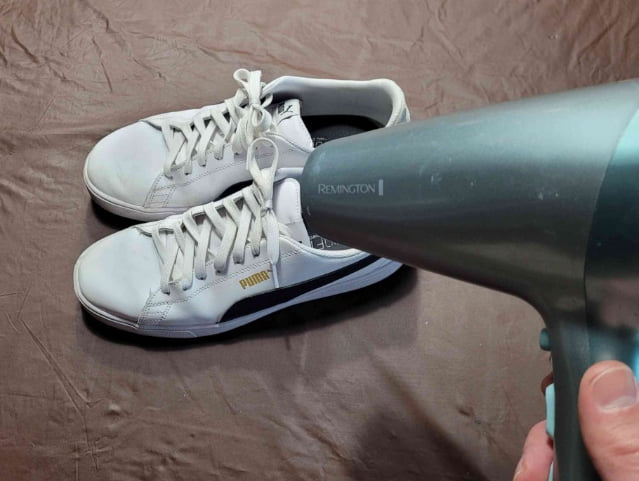
Leather and vinyl shoes stay stiff long after their welcome. Blast them with a hairdryer to expedite softening.
- Remove laces and insoles
- Heat uppers and soles until warm
- Flex shoes throughout heating to relax materials
- Apply leather conditioner while warm
- Stuff with damp newspaper or towels overnight
The heat and moisture help shoes mold to your feet faster. Just check temperature to avoid scorching. A few sessions will break even the crustiest kicks.
6. Wear Socks to Minimize Friction
Socks create a protective friction barrier between feet and shoes. This prevents blisters.
Ideal work socks have these features:
- Snug fit without binding
- Moisture wicking fabric like wool or synthetics
- Light cushioning underfoot
- Low profile toe seams
- Breathable weave
- Antimicrobial to minimize odors
Change socks halfway through shifts to keep feet dry. Having shoes match the shape of your feet reduces the need for thick socks.
7. Cushion the Collar
Rigid shoe collars bite into ankles causing abrasions and sprains. Softening this pressure point protects from injuries.
- Attach self-adhesive foam or gel pads
- Wrap collar with soft cloth or mole skin
- Use kinesiology tape over vulnerable spots
- Opt for shoes with padded collars
- Wear higher crew socks offering more coverage
Cushioning the collar helps block irritation while supporting the joint. Don’t undermine ankles with brutal boots.
8. Increase Cushioning Underfoot
Hard midsoles multiply shock impact through feet and joints. More cushioning absorbs this jarring force.
- Swap original insole for superior aftermarket version
- Add supportive orthotics for arch and metatarsal padding
- Stack memory foam or gel pads inside for extra damping
- Check underfoot padding every 6 months for compression
Proper cushioning minimizes repetitive stress injuries caused by hard surfaces. Invest in plush pillows for rough terrain.
9. Select Shoes for the Job
Cowboy boots look awesome, but maybe not for waiting tables or patrolling Disney. Choose shoes aligned with job activities.
Consider work conditions and demands:
- Prolonged standing – prioritize shock absorption
- Slippery surfaces – focus on traction over style
- Outdoors – ensure waterproofing and insulation
- Heavy loads – need rigid sole and firm heel counter
- High heat – breathable materials help ventilate
Having the right tool for the job keeps your body happy. Don’t let fashion cripple function.
10. Use Moleskin For Blister Prevention
Moleskin sheets add protective padding to tender areas prone to blisters like the back of the heel.
Follow these steps to apply:
- Cut pieces large enough to cover the at-risk zone with a surrounding margin.
- Remove adhesive backing and stick to clean skin, smoothing any air bubbles beneath.
- If your shoes caused blisters already, place moleskin around them for protection as they heal.
Replace moleskin once it starts peeling away. And ensure your shoes fit properly so moleskin is just temporary relief.
11. Stretch Shoes With a Shoetree
Shoe stretchers gently expand tight-fitting shoes that cause pinching or discomfort.
They insert snugly inside the shoe and use mechanical expansion plates or pressure from hand-pumped bulbs to widen and elongate the shoe.
Common materials:
- Plastic stretchers mold shoes through sustained outward pressure.
- Wooden models stretch via built-in mechanical expansion screws.
- Inflatable stretchers use balloon-like bulbs you pump by hand.
Stretching shoes wider and longer alleviates pain from pinching and rubbing. But severe fit issues may still require new shoes.
12. Loosen Laces For Circulation
If your shoes have laces, keep them a bit looser for comfort, especially across the toe box.
Lacing techniques like skipping eyelets at the toe box give your feet room to spread naturally when standing and walking.
Tight laces restrict circulation, causing tingling, numbness or throbbing over time. They also transfer pressure to sensitive toe joints.
Give your feet breathing room while still securing the heel. Adjust fit from the base of the laces upward.
13. Take Regular Foot Breaks
Standing or walking for hours tires feet quickly. Combat fatigue by resting feet every 2 hours.
- Sit down and elevate feet above heart
- Massage feet and stretch toes
- Remove shoes and socks – air out feet
- Drink water – hydration prevents swelling
- Apply moisturizer to prevent cracking
This recharges lower extremities and restores blood flow. Don’t let feet remain slaves without the occasional uprising.
14. Replace Shoes Regularly
Shoes wear out with use. Collapsing cushioning and lack of support stresses feet.
Follow these tips for determining replacement timing:
- Mark shoes’ purchase date inside with permanent marker
- Inspect wear patterns on soles every few months
- Replace after 300-500 miles for athletic shoes
- Work boots need swapped every 12-18 months
- Orthotics may need replaced more frequently
Shun tattered kicks. Fresh footwear protects your engines of locomotion. Give your soles some sole.
Make Each Step a Pleasure, Not a Punishment
No one deserves veruca salt-coated socks and toenails tinted black-and-blue. Don’t submit to cinderblock kicks just because the boss mandates them.
Implement the tips in this guide to transform rigid work shoes into apropos foot thrones. Find options providing primrose path-soft padding to pamper puny feet.
With a few adjustments, your dogs will be tap dancing again in no time. Implement these hacks today to step into cloud-like comfort. Your feet will thank you.
Frequently Asked Questions on Making Work Shoes Comfortable
What causes work shoes to be uncomfortable?
The main culprits of discomfort in work shoes include poor fit, insufficient cushioning, restrictive toe boxes, inflexible soles, excessive weight, moisture trapping materials, and extended wear without breaks.
Should my toes touch the end of work shoes?
No, your toes should have about a half-inch of space between the tip and the end of the shoe when standing. Any contact while walking causes black nails and blisters over time.
How can I stretch tight work shoes?
Use a shoe stretcher tool to mechanically broaden snug leather uppers. You can also soften leather with heat from a hairdryer or by applying leather conditioner. Wear shoes with thick socks and take short break-in periods.
What socks are best for work shoes?
Look for moisture wicking fabrics like wool or synthetic blends. Light cushioning helps minimize friction while a snug fit reduces rubbing. Low profile seams prevent irritation and breathable materials keep feet cool and dry.
What is the best way to lace work boots?
Skip tight vertical lacing patterns. Try alternatives like criss-cross, runner’s or heel locking methods which leave the midfoot and forefoot looser for comfort.
How often should I replace insoles or orthotics?
Plan on swapping orthotic inserts every 12-18 months. Cushioning compresses over time and lacks support. Inspect insoles every 6 months and replace sooner if worn out.
Can I put my work shoes in the washing machine?
Only if the tag specifically states washing is allowed. Use cold water and gentle cycle. Remove insoles and laces first. Let shoes air dry completely. Best to spot clean leather shoes instead.
How often should you replace work shoes?
The average lifespan is around 12-18 months for heavy use work boots. Athletic style shoes may last 300-500 miles. Replace any footwear sooner if cushioning deteriorates or structural problems appear.

